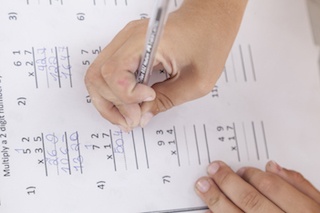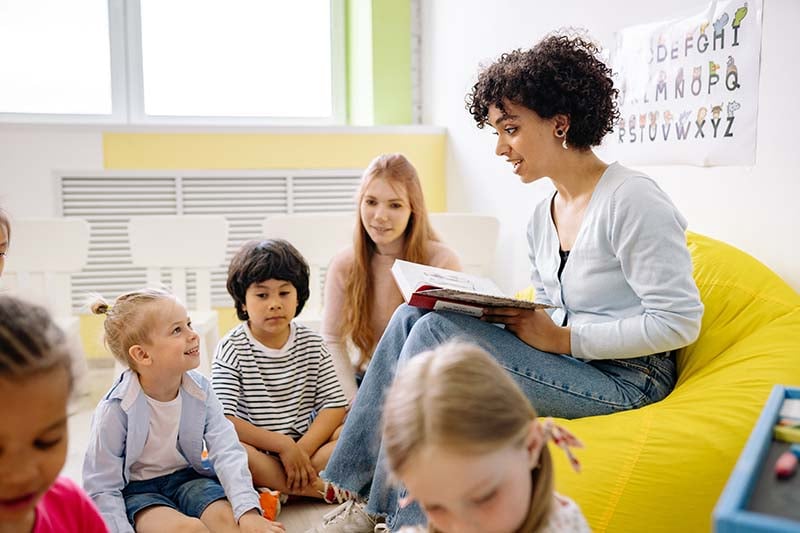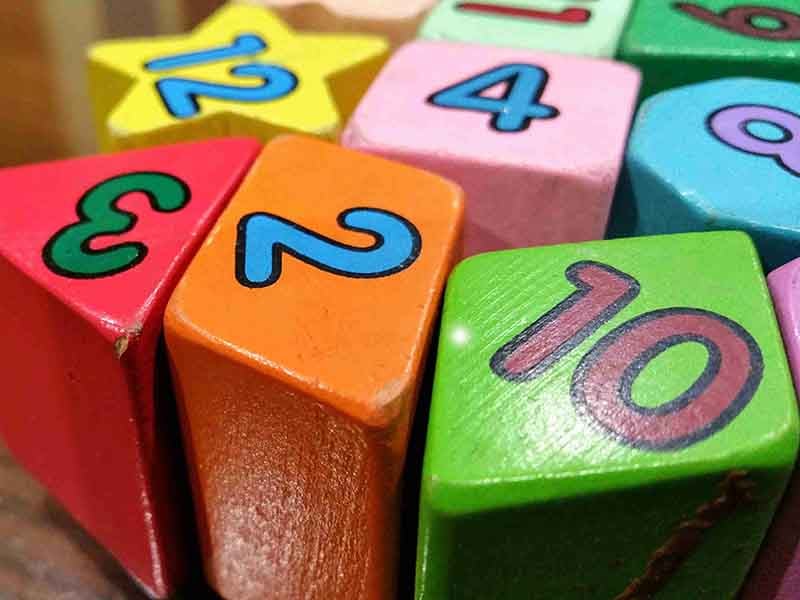 Math can be quite the challenge for some children and for some students; traditional learning models do not do the trick. Rosamond Welchman-Tischler, author of “How to Use Children’s Literature to Teach Mathematics” (1992), discusses in her book how to encourage the connection between mathematics and children's literature as part of realizing that vision and recommends ways to use literature in the mathematics classroom to enhance students’ learning experiences.
Math can be quite the challenge for some children and for some students; traditional learning models do not do the trick. Rosamond Welchman-Tischler, author of “How to Use Children’s Literature to Teach Mathematics” (1992), discusses in her book how to encourage the connection between mathematics and children's literature as part of realizing that vision and recommends ways to use literature in the mathematics classroom to enhance students’ learning experiences.
Diving into a book can get children to think about math and problem solving in a unique an enjoyable way and can help them see the importance of numbers through a literary device. According to various other research, learning and boosting math through literature can help enhance learning in numerous ways:
Can build an insubstantial perception of math skills through illustrations
Provide important context for mathematical content
Promote the development of number sense
Make a challenging problem more visual
Explain a mathematics concept
Stimulate critical thinking
Increase the level of interest in mathematics
Here are 8 fun and educational mathematic books for children!
Quack and Count by Keith Baker
Looking for a cute, fun book for your early learner? This book is a playful, rhyming text counting book that captures the day of seven little ducklings as they leap, slide, and dive because they are getting ready to fly for the first time. The ducklings group themselves into different combinations that add up to seven. 2+ (numbers and operations)
Who sank the boat? by Pamela Allen
A cow, a donkey, a sheep, a pig, and a tiny little mouse decide to take a row in the bay. The animals attempt to balance their weight in a boat, but unfortunately, the boat sinks! This book introduces weight and balance and is perfect for learning vocabulary and making simple predictions. 2-5yrs (measuring, predicting)
Mr. Cookie Baker by Monica Wellington
In this book, young children can follow the process of measuring, mixing, baking, and decorating, and of course, eating cookies. They do this by the use of bright illustrations that show the different utensils, measuring cups and spoons, and a timer. This book is great for children learning about sorting, measuring, and telling time. 2-5yrs (measuring)
Ten Little Rabbits by Virginia Grossman
This Native American tradition book not only teaches children how to count to ten, but introduces children to Native American culture. There are ten rabbits that wear a Native American blanket from five different tribes. Each woven, bright, and colorful blanket that a rabbit wears is labeled with the name of its corresponding tribe and has information about the tribe’s cultural traditions. 4+ (patterns)
Fraction Action by Loreen Leedy.
This beginner fraction book introduces fractions by having Miss Prime teach the students different fraction problems over the course of five days. Miss Prime has her students visualize fractions and then visualize dividing whole objects into halves, thirds, and fourths. She does this by sharing a story about dividing fruit equally among four friends and another about subtracting fractions from a dollar. (4-8yrs) (fractions)
Color Zoo by Lois Ehlert
This uniquely designed book uses pictures of geometric shapes to form animals. The bright colors and simple shapes help toddlers who are just learning about animals and shapes. This is an awesome book for learning about shapes, colors, and animals because each animal is created from the layers of cut-outs and colored shapes on each page. As you pull back the page you are on, it reveals a different abstract version of another animal below. 4-8yrs (geometry, spatial relations)
Each orange has 8 slices: A counting book by Paul Giganti, Jr. and Donald Crews
This is a great fraction and multiplication introduction book. The book asks the reader questions in simple, yet thought provoking ways and is full of vivid and colorful illustrations. The images are a perfect aid for children attempting to answer the questions. If you are looking for a marvelous book that encourages multiplicative thinking, then this is a must-have. 4-8yrs (fractions, multiplication, probability)
Lemonade for Sale by Stuart Murphy and Tricia Tusa.
In Lemonade for Sale, four friends and their sidekick, Petey the Parrot decide to run a lemonade stand to earn money to fix their clubhouse. The group creates a bar graph to track the increase and decrease of their sales. The book illustrates how a bar graph works in an engaging, relatable way and helps children learn how to count and learn the value of money. 6-10yrs (graphing)
Sources:
"10 Children’s Books About Math." Delightful Children's Books. 18 Oct. 2011. Web.
Cox, Janelle. "Using Children's Literature to Motivate Math Lessons." TeachHUB. Web.
Davis, Delilah, and Ingrid Haynes. "Literacy Daily." International Literacy Association. 1 June 2
Price, Ruth R., and Colleen Lennon. "Using Children’s Literature to Teach Mathematics."
Quantiles. MetaMetrics. Web.





